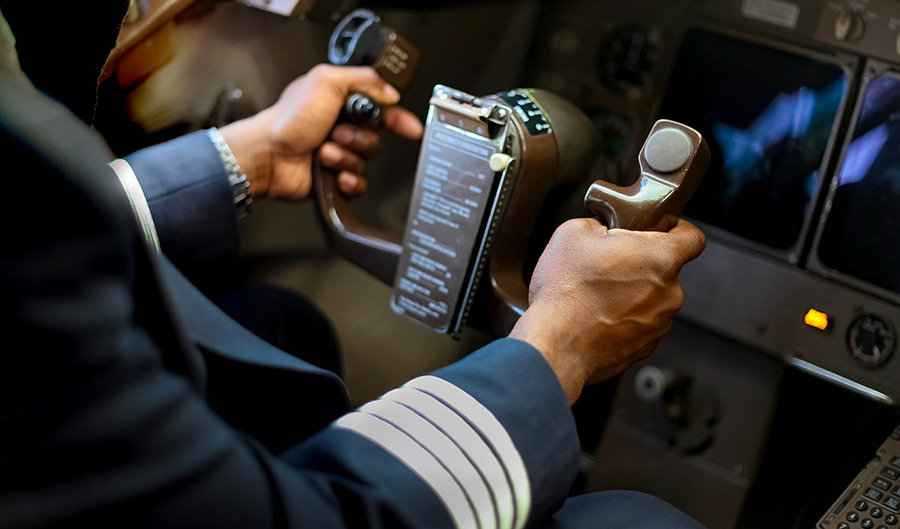While all of the instruments in the cockpit are important, the airspeed indicator is almost certainly one to keep an eye on. Simply put, without sufficient airspeed, an aircraft won’t fly. There are a few things to note that are vital with airspeed indicators, and today we will go through what an airspeed indicator is, how it works, and some key things to be aware of.
The airspeed indicator is the primary means to determine how fast the aircraft is flying through the air. It has a numbered scale, normally given in knots. It receives air pressure information from two different sources and measures a differential between the two, presenting this data as ‘airspeed’.
To learn more about how it works, read on.
What is an Airspeed Indicator?
In reality, an airspeed indicator is actually a calibrated barometer. While its output is data known as ‘airspeed,’ what it actually measures is air pressure.
The airspeed indicator forms part of the ‘six pack’ of pilot instruments present in the flight deck. In a normal cockpit configuration, the dial measuring airspeed can be found in the upper left section of the instrument panel.
The airspeed indicator is used often throughout the flight. According to the general principles of flight, lift is a function of airspeed, so it is vital if you want the airplane to keep flying!
Pilots will use the airspeed indicator all the way from takeoff until the latter stages of touchdown. Flying both too fast and too slow can be dangerous, so it really does pay attention to this instrument at all times.
Here’s the general principle of the airspeed indicators components and how it works.
How Does an Airspeed Indicator Work?
As we stated at the outset, the airspeed indicator measures air pressure. It is connected to something called the ‘pitot static’ system. This is a network of hollow tubes that allow air to flow into (and out of) the instruments.
The airspeed indicator has two ‘feeds’, both of which are critically important: –
- The Static System – This system takes in the air that is ‘at rest’, essentially, ambient air.
- The Pitot System – The pitot system is designed to capture ‘dynamic’ air or air that is moving. This is sometimes called ‘ram air’.
The static port is usually located in an area of relatively undisturbed airflow, such as on the side of an aircraft (or even in the cockpit). The pitot system normally has ‘probes’ that look like tiny forward-facing drinking straws.
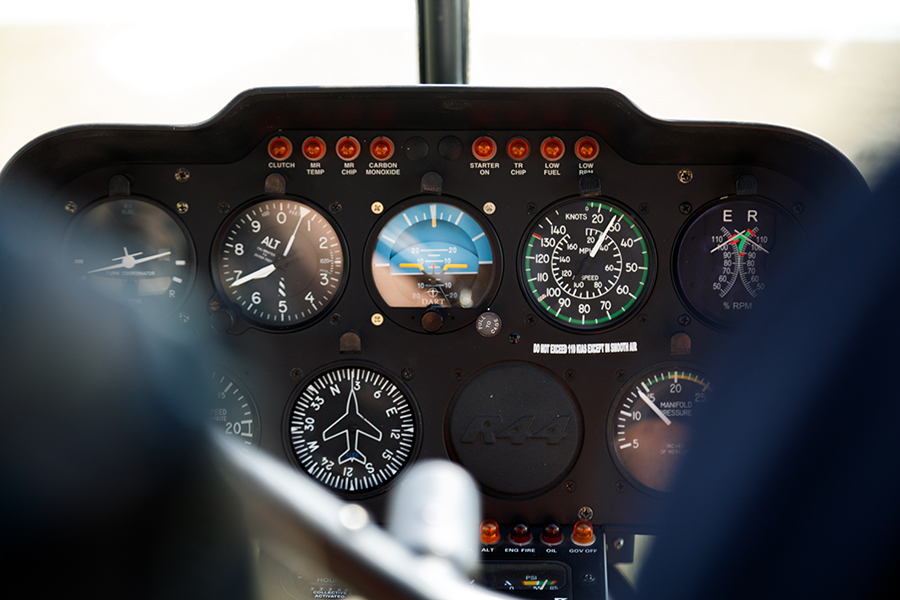
If you’ve ever put your hand out of a moving car window, you’ll already recognize the general principle of how an airspeed indicator works. If you could ‘calibrate’ your arm to measure the force, you’d be a living airspeed indicator!
Airplanes have a similar system, just without you using your arm.
When moving air is brought to rest, it creates a force. The moving air enters the instrument via a pitot tube, which is brought to rest against a diaphragm. The greater the force of air (due to higher airspeed), the more the diaphragm moves.
The diaphragm is connected to a needle on the face of the airspeed indicator by a few tiny gears called ‘sectors’ and ‘pinions’. These are calibrated to move a certain amount depending on how much the diaphragm moves.
Because the gears and diaphragm are calibrated to produce a certain response at a given ram air pressure, we can gain a really accurate indication of our speed through the air.
Why the static input?
It’s quite simple. The static source provides a ‘datum’ against which the ram air is measured to display airspeed. It would make no sense to measure dynamic pressure from the level you were flying at against static air taken from a different altitude. You’d get a false reading!
How Do You Read an Airspeed Indicator
Reading an airspeed indicator is pretty simple in principle.
Around the outside of the dial, there are numbers. These numbers are ‘knots’… Or to use the full term ‘nautical miles per hour’. There will be a single (normally white) needle in analog systems. The number your needle points to is your airspeed.
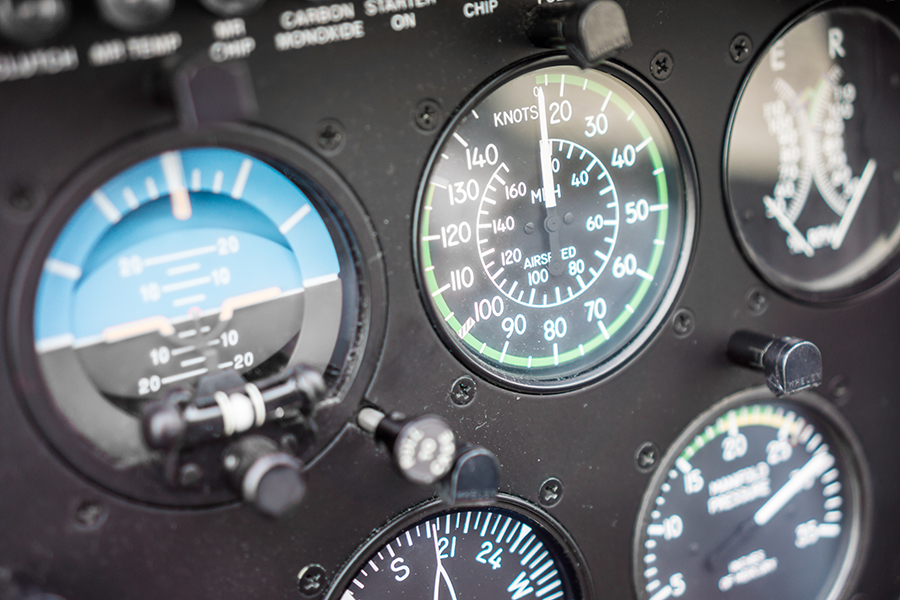
But.
There is more to airspeed than simply reading a number. On viewing the instrument, you’ll probably notice several colored ‘bands’. These all mean something, and they are vitally important for safe flight.
These are called ‘V’ Speeds (there are actually plenty of them), and they often correspond to data you’ll find in the pilots operating handbook.
Here’s a quick table showing you what they mean: –
Colored Airspeed Band |
General Meaning |
Bottom of Band |
Top of Band |
| White | Normal flap operating range | Stall speed with flaps and gear extended | Maximum speed with flaps extended |
| Green | Normal operating range | Stall speed in ‘clean’ configuration | Maximum cruise speed |
| Yellow/Amber | Speed caution range | Maneuver with care | Maneuver with care |
| Red “line” | Never exceed speed | Excessive structural airframe load if exceeded | Excessive structural airframe load if exceeded |
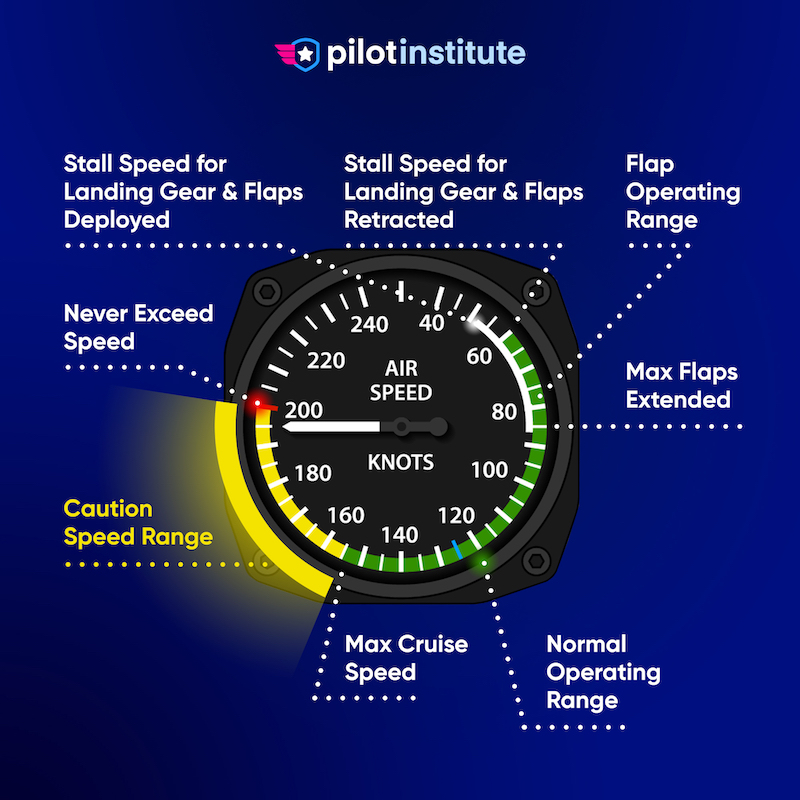
Why is an Airspeed Indicator Important?
Airspeed is vital for continued and sustained flight. Here are some of the reasons why it is an important part of the ‘six pack’: –
Stall Speed
Airplanes need a constant airflow over their wings to generate lift. If the aircraft’s speed drops below a defined level (called VSO, or the ‘stall speed’), then the aircraft’s weight will exceed the lift produced.
This results in a ‘stall’, where the aircraft is no longer flying and is instead literally ‘falling’.
If you take a look at the above table, you’ll notice two of the arcs (green and white) both give a different stall speed.
Why is this?
In simple terms, this is because the wings generate more lift with flaps extended, meaning the airplane can fly slower before it stalls. To learn a little more about flaps, be sure to check our guide on parts of a wing here.
Flap and Gear Limitations
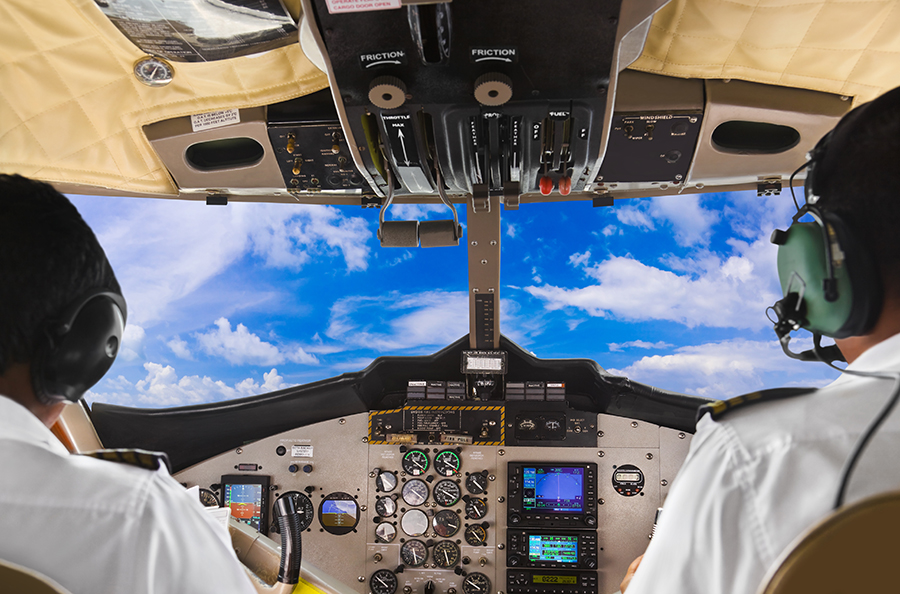
Flaps and the landing gear (or ‘wheels’ if you prefer) protrude into the airflow, and because they move, they are held by hinges or struts. These hinges and struts aren’t quite as strong as the fixed parts of the airframe and can become overstressed if subjected to too much force.
Navigation
In its purest form, navigation and working out where you are when cross country flying is simply a case of measuring your speed multiplied by the amount of time you have flown.
And there is a clue in the above. To accurately navigate, you really need to know how fast you fly. An airspeed indicator is a primary tool that allows us to do this.
Maneuvering
If you imagine riding a bicycle, it wouldn’t be safe (or comfortable) to make a 90° turn at a very high speed, and the same principle applies in an aircraft.
The airplane could fly very fast in a straight line, but even fighter jets are given limits as to the speeds at which they can safely turn to avoid placing too much stress on the airframe.
Speaking of which…
Structural Limitations
When flying faster, you increase structural loads on the aircraft. There are several reasons that this happens, namely: –
- Increased inertia
- Increased effectiveness of the flight controls
- Increased ‘G’ Load
- Increased drag
Most aircraft have a structural limit as to the number of “G’s” (a multiple of the force of normal gravity) that they can safely handle. This tends to increase due to inertia when the aircraft flies quickly.
In basic terms, go too fast and maneuver too hard, and it is possible to ‘pull the wings off’. The simplest way to protect against this is to mark a clear red line (called ‘VNE’) that must never be exceeded.
Conclusion
The airspeed indicator is one of the most crucial instruments onboard an aircraft. Airspeed is one of the key elements to safe flight. By understanding what this instrument is telling you and how it works, you’ll be able to fly more safely, navigate more effectively and ensure you are operating the aircraft according to the manufacturer’s guidance.
Flying is fast, fun, and exciting. If you enjoyed reading about airspeed indicators, why not learn a little more here? It’s free!
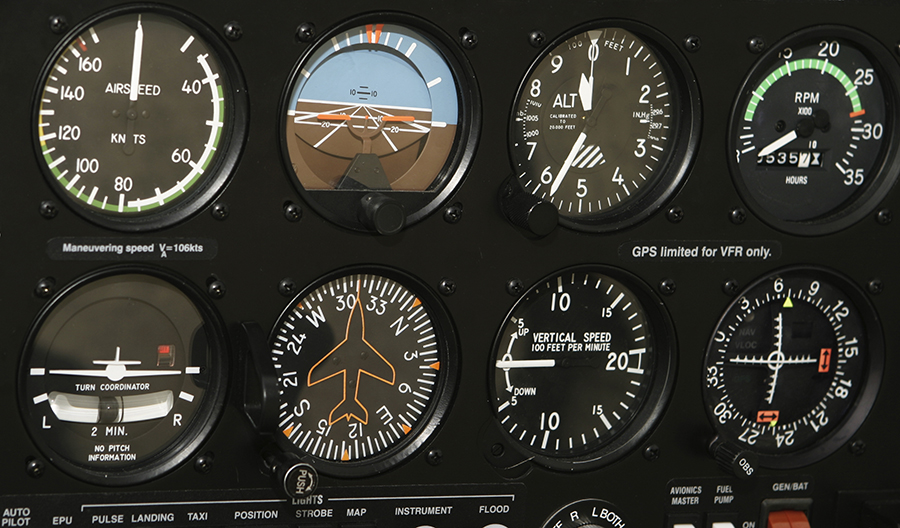
 @pilotinstituteairplanes
@pilotinstituteairplanes

